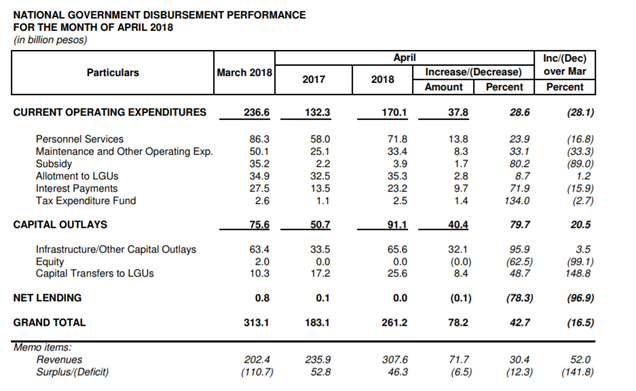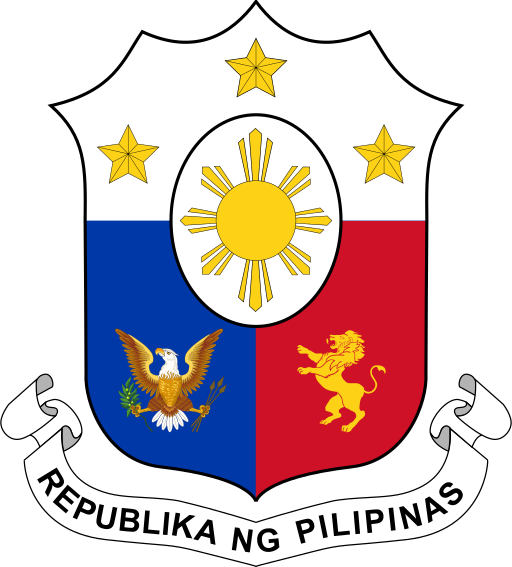Data on government spending revealed that disbursements in April 2018 reached P261.2 billion, growing by 43%, fueled by strong Infrastructure and Other Capital Outlays. Infrastructure spending almost doubled from P33.5 billion in April 2017 to P65.6 billion in April 2018. The robust performance of disbursements in April puts total government spending at P1.03 trillion for the first four months of the year, or a 29% year-on-year increase.
“We are keeping our foot on the gas pedal with regard to government spending,” said Budget and Management Secretary Benjamin E. Diokno. “We will maintain this positive momentum for the rest of the year and virtually put an end to underspending,” he added.
Infrastructure and Other Capital spending surged by 96% in April on account of various road infrastructure projects by the Department of Public Works and Highways (DPWH), including: 1) improvement, upgrading and widening of roads and bridges; 2) construction and improvement of access roads leading to declared tourism destinations under the Program Convergence Budgeting; 3) construction of flood control/mitigation structures and drainage systems; 4) preventive maintenance projects; and 5) payment of Right-of-Way claims.
Capital outlay projects of State Universities and Colleges (SUCs), specificially the purchase of laboratory and Information Technology (IT) equipment, and construction of academic buildings and facilities in the University of the Philippines (UP) System; and the construction of police stations and purchase of equipment under the Capability Enhancement Program of the Department of the Interior and Local Government-Philippine National Police (DILG-PNP) also contributed to higher infrastructure spending in April.
Maintenance and Other Operating Expenses (MOOE) in April also reached P33.4 billion, rising by 33% year-on-year, due to the operating requirements of public schools nationwide. This was supported by the payment of tuition fees to student beneficiaries through the Higher Education Support Fund, and release of allowances and benefits to the beneficiaries of the various scholarship assistance, grants, and incentives provided by the Commission on Higher Education (CHED).
Maintenance spending was also boosted by the implementation of Kapit Bisig Laban sa Kahirapan - Comprehensive and Integrated Delivery of Social Services (KALAHI-CIDSS), a community-driven poverty alleviation program of the Department of Social Welfare and Development (DSWD).
Personnel Services also increased by 24%, year-on-year, as it reached P71.8 billion in April. This is mainly a result of the third tranche implementation of Compensation Adjustment per EO No. 201, s. 2016 and higher pay of the military and uniformed personnel pursuant to JR No. 1, s. 2016.
“For the DBM, this shows that the bureaucracy is in good position to shift to a cash-based budget next year,” said the Budget Chief. “As a whole, strong government spending will only improve our growth and development prospects, which means better living standards and more economic opportunities for our people,” he concluded.
For the full report on the National Government Disbursement Performance for April 2018, visit https://www.dbm.gov.ph/w
ANNEX: Tables on Government Spending for April 2018

For inquiries, further questions and requests for interview, please contact Marianne Ongjuco:
Email:Mobile: +63918-944-8109

